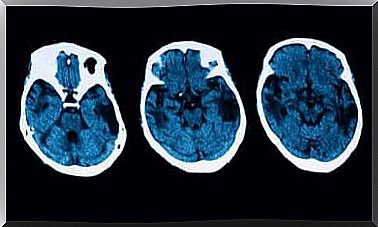Shellfish Allergy: Symptoms And Treatments

A shellfish allergy is one of the most common types of allergies. Mollusks and crustaceans can easily cause the immune system to go into overdrive to fight off the allergen. This can result in mild to severe reactions.
Severe allergic reactions can be extremely dangerous. It is therefore important to understand the symptoms of the allergy to avoid major complications.
When a substance enters the body, the immune system decides whether to fight it or let it through. In the case of a shellfish allergy, the immune system identifies the protein as harmful. The body then reacts for protection. Sometimes these reactions can progress to such a degree that they are potentially life-threatening.
What is a shellfish allergy?
As described in a study in the Current Opinion in Allergy and Clinical Immunology , a shellfish allergy is caused by specific proteins found in certain seafood. The most common allergy-producing seafood is crustaceans and mollusks.
Once the body detects an allergen, it triggers an immune response that can result in mild symptoms such as hives or mild swelling, or more severe symptoms such as anaphylaxis. A family history of shellfish allergies is one of the biggest risk factors for someone who may develop the allergy.
In addition, this type of allergy is more common in adults than in children, although it can occur at any stage of life. In addition, sensitivity to shellfish is more common in women than in men.
What are the symptoms?

As we mentioned before, allergy symptoms can be mild or severe. In general, the first signs of an allergic reaction appear about an hour after consuming shellfish (Spanish link). Typical symptoms are swelling and itching of the lips and/or tongue.
In more severe cases, you may have difficulty breathing or have intestinal problems such as diarrhea, stomach pain and vomiting. This type of reaction usually requires medication and taking a probiotic, which has been shown to control persistent diarrhea.
Other symptoms such as dizziness, light-headedness, and fainting or loss of consciousness may also occur. If any of these symptoms occur, seek medical attention to monitor its progress and take medication if necessary.
Anaphylaxis
A shellfish allergy can lead to anaphylaxis, a life-threatening side effect that requires immediate medical attention. In fact, adrenaline injections in the form of epi-pens are the first and fundamental line of treatment.
A study published in the Jornal de Pediatria (link) has confirmed this treatment method. Symptoms of anaphylaxis include the following:
- Breathing difficulties due to swelling of the throat.
- A reduction in blood pressure.
- Confusion.
- Dizziness.
- Fainting or loss of consciousness.
What are the possible complications?
There are certain pre-existing conditions that can drastically exacerbate a person’s susceptibility to anaphylactic shock. These people are therefore more at risk.
For example, if someone has asthma, a family history of anaphylaxis caused by food allergies, or a personal history of allergic reactions to shellfish, then there’s a good chance that hypersensitivity can become complicated.
It is therefore extremely important to carefully review the labels of any food you buy. This way you can ensure that there are no cross-contamination or traces of food that could cause an allergic reaction.
In fact, if you have a severe shellfish allergy, you may need to stay away from anything that processes and cooks seafood and shellfish. The odors or fumes that the shellfish give off can cause side effects.
How To Treat A Shellfish Allergy
Currently, there is no surefire cure for a shellfish allergy. This food allergy is a process that, once it appears, will likely last the rest of your life.
Therefore, all you can really do is try to avoid ingesting shellfish and accidentally inhaling their vapors. Of course, this only applies if you already have a confirmed shellfish allergy.
If you go to a restaurant, check if the menu has an allergen card or label (Spanish link). This allows you to see which dishes contain shellfish and which do not.
Read food labels carefully to confirm that the food has not been packaged or processed in a facility that also processes seafood. It is very likely that if that were the case, the food contains traces of crustaceans, which can be dangerous.
Shellfish allergy in children
As we have already mentioned, it is more common to develop a shellfish allergy in adulthood than in childhood, although the latter is certainly possible.
If you notice a negative reaction in your child after eating shellfish, we recommend that you bring an epi-pen for emergencies. This can help save the child’s life by preventing anaphylactic shock.
Parents and caregivers of a child with an allergy should be very careful to ensure that the child does not eat shellfish or food contaminated with the allergen.
However, if the child shows symptoms of hypersensitivity for the first time, such as swelling, itching or inflammation in the mouth, it is best to go to the emergency room.
How to avoid allergic reactions
If you or your child has a shellfish allergy, follow these helpful tips below. You can prevent possible exposure to shellfish and/or seafood.
Read food labels
Make sure any food items you buy at the grocery store are allergen-free by reading food labels. This way you can avoid future problems.
Be careful when dining out

Today , restaurant menus normally have a section highlighting potential allergens in their dishes. Still, it’s always a good idea to let the waiter know about your allergy so they can take the proper precautions to avoid cross-contamination of food.
Cross-contamination
People with food allergies can already get a reaction by eating foods contaminated in a court is whether that same utensils prepared.
In other words, you don’t have to consume shellfish to have a reaction or anaphylaxis. It is enough to eat food that has touched the same surface as the crustaceans, therefore hygiene is extremely important.
Shellfish allergies are a food-related problem
As you’ve learned, a shellfish allergy can be life-threatening if one doesn’t take precautions. It is therefore always important to read food labels and seek immediate medical attention if you think you may be having an allergic reaction.
If your fears are confirmed, don’t forget to always have an epi-pen with you in case you need it one day. This is also important for parents and caregivers of children with shellfish allergies, who should take special precautions to ensure their child stays away from potential allergens.









